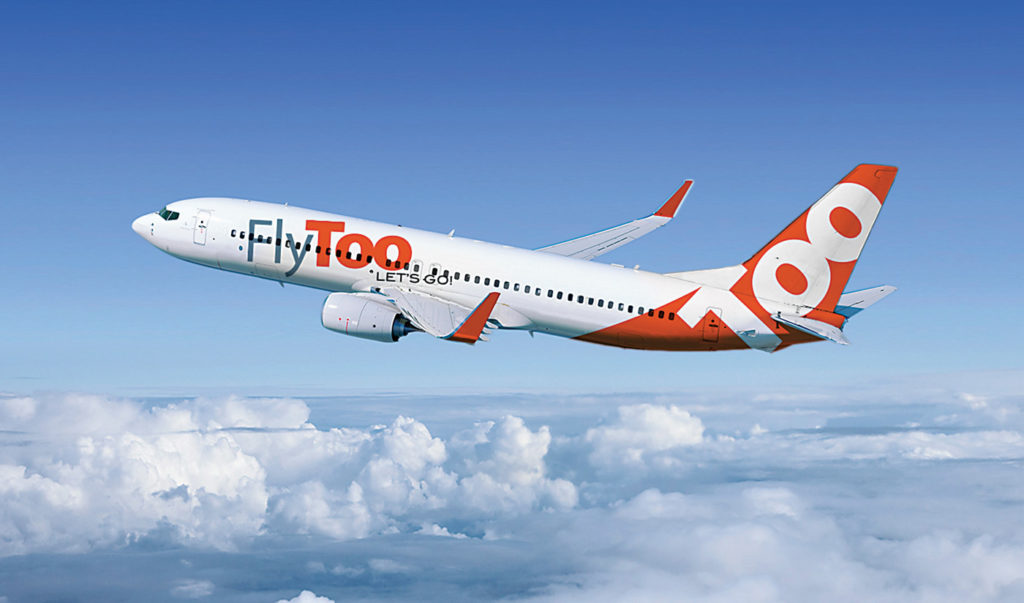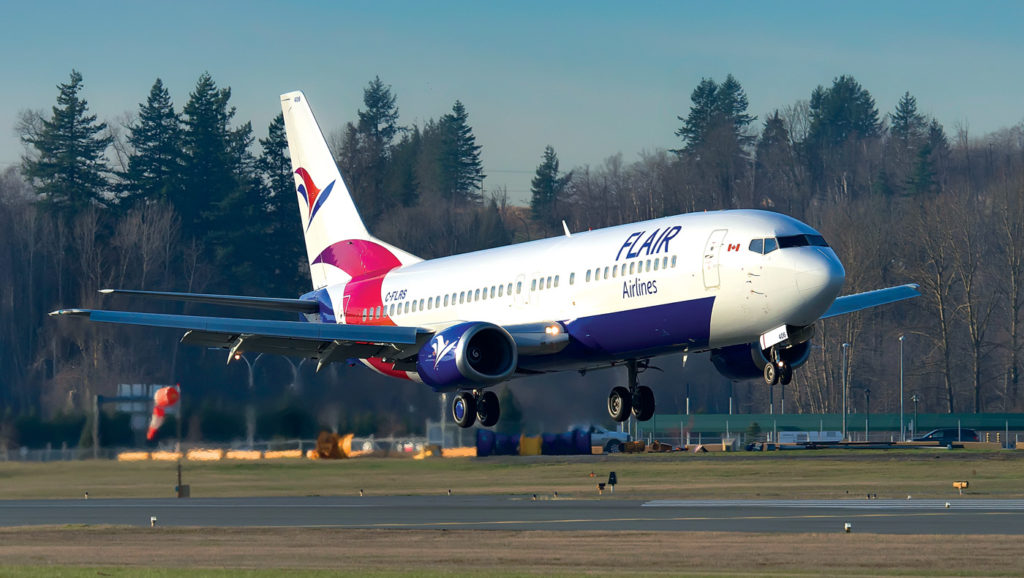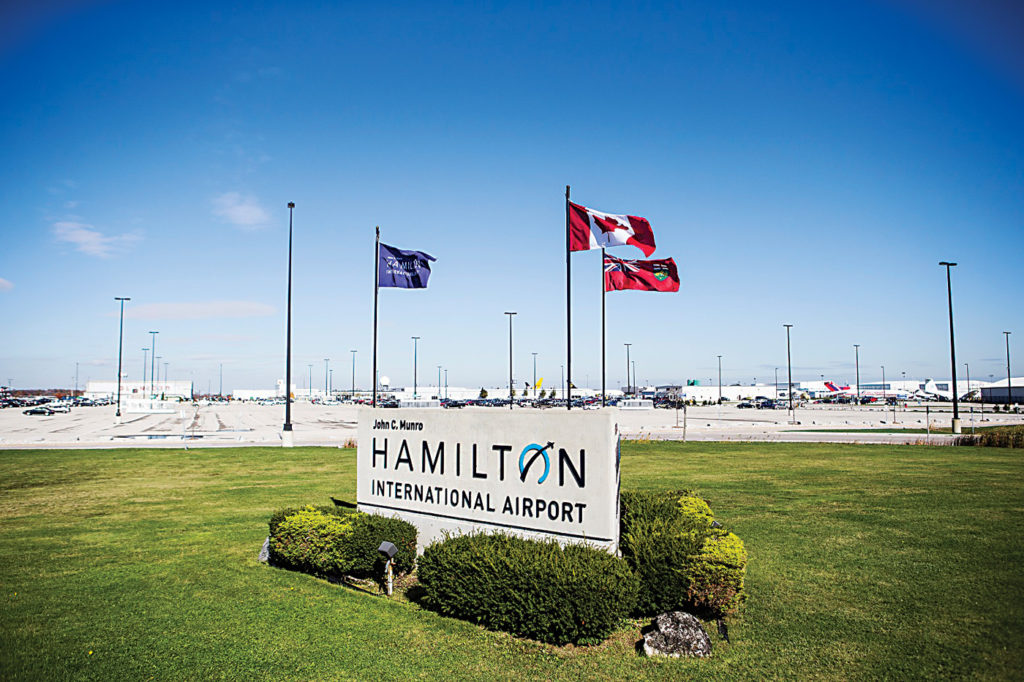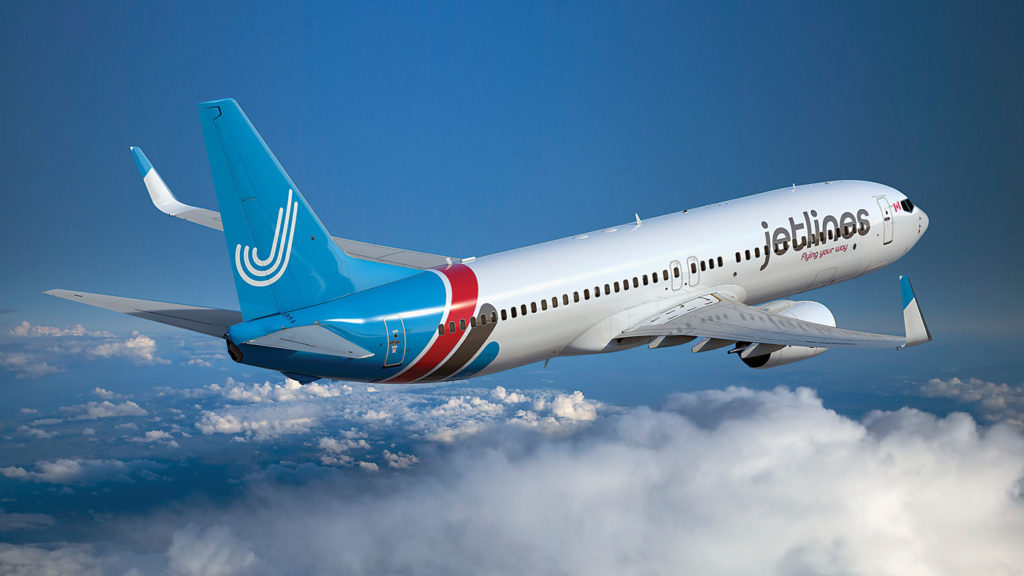Estimated reading time 12 minutes, 57 seconds.
Canadian airport ramps are crowded with the ghosts of airlines past. Does anyone remember Skyservice Airlines? How about Canada 3000, Jetsgo or Zoom? Or maybe you travelled on CanJet, Roots Air or Harmony Airways? These are just some of the defunct airlines that tried–and failed–to make a go of it in the Canadian airline industry.

This country is notoriously tough on operators who dare to compete with the reigning duopoly of Air Canada and WestJet. Together, the two controlled a whopping 70 per cent of domestic market share in 2017, according to market research portal Statista.
And yet, a May 2017 North America airline satisfaction survey performed by J.D. Power found that Air Canada bottomed out in the traditional carrier category, with a mere two out of five stars. Likewise, WestJet only landed two stars in the low-cost carrier category, leaving the distinct impression that Canadians would appreciate–indeed, welcome–other travel options.
A MATTER OF TIMING
Let’s go back a few years to when the Canadian dollar was soaring in 2012, and so was the cost of aviation fuel. As domestic airlines raised ticket prices in response, many consumers elected to drive across the border to fly from a U.S. airport. In many cases, they saved themselves hundreds of dollars.
That same year, the Conference Board of Canada reported that roughly five million Canadians crossed the border by land in order to catch flights from American airports. The organization said this exodus was driven by a “perfect storm” of factors, among them wages, fuel prices, taxes, and fees for airport and navigation services.

“Together, these are providing a 30 per cent cost advantage to U.S. carriers,” wrote the board’s Vijay Gill in a now six-year-old report titled, Driven Away: Why More Canadians are Choosing Cross Border Airports.
Gill noted that changes in Canadian policies could bring millions of passengers back to domestic airports and help to counter the U.S. carriers’ cost advantage. This advantage was attributed to a mix of factors, including high fees and taxes levied by Ottawa and the provinces, as well as air carrier productivity and more aviation-friendly policies south of the border.
But it looks like the biggest factor driving Canadians to fly from domestic airports was simply the exchange rate. Today, the Canadian dollar is worth about 77 cents compared to the U.S. greenback. Contrast that to 2014, when the loonie started the year at 94 cents U.S., and suddenly crossing the border to fly with a U.S. carrier doesn’t seem so appealing.
In fact, data from the U.S. Bureau of Transportation Statistics shows that four out of five border airports popular with Canadians saw their passenger traffic decline in the first 10 months of 2015, which roughly corresponds with the loonie’s decline. There have even been reports of the pendulum swinging in the other direction, with American licence plates now filling the parking lots at Canadian airports.

A weaker loonie has a big impact on how consumers book travel, and these days they’re choosing to shop–and fly–from home
And what do shoppers like most? Competition, because competition means options. Everyone loves a good deal, especially on travel.
To some, the time is ripe for the advent of Canadian ultra-low-cost carriers (ULCCs).
Recently, the Liberal government tabled Bill C-49 to amend the Canada Transportation Act, which will raise the limit of foreign investment in Canadian airlines from 25 per cent to 49 per cent. The change provides air carriers with greater access to capital; thereby making the idea of a Canadian ULCC more feasible.
“A carrier should have $50 million for a start-up with narrow-bodies,” asserted Robert Kokonis, president and managing director of AirTrav Inc., a Toronto-based aviation consulting firm founded in 2001. “The top reasons airlines go out of business are under-capitalization, going into the wrong markets, and expanding too fast. This business burns money. The costs are high over the short term and volatile, but dealing with the economy and competition requires a buffer.”
(Both Canada Jetlines and Enerjet’s FlyToo venture received immediate exemptions in late 2016 to allow them to pursue more foreign investment.)
But while consumers may be rubbing their hands with glee as they contemplate cheap no frills travel, industry analysts say there’s no way the Canadian market can support all of the ULCC contenders trying to get off the ground.
IT’S TOUGH OUT THERE
Canada has traditionally been a merciless proving ground for any airline.
There are several reasons why, and the first is simple geography. While this country is about one tenth the size of its southern neighbour population-wise, Canada’s territory is massive, spanning 5,063 kilometres from Victoria, B.C. in the west to St. John’s, N.L. in the east. Not to mention the fact that flying from its southernmost point in Lake Erie to its northern tip on Ellesmere Island would necessitate traversing more than 4,600 kilometres.

And in this vast land, there aren’t very many people. According to Statistics Canada’s 2016 census data, 66 per cent of the country’s 35 million citizens live within 100 kilometres of the U.S. border, in an area that represents only about four per cent of Canada’s total territory.
“We have a low population density,” said Kokonis. “In the U.S. and in Europe, there is a denser population that is more evenly spread east-west and north-south, so if you have a hub-and-spoke [airline] operating model, you can go in any direction.”
This means that while Canada offers airlines a handful of lucrative shorter routes to populous destinations (the Toronto-Montreal-Ottawa triangle, for example), covering the country also means flying long hauls that don’t necessarily have the passenger demand to support them. Those lengthy flights require more fuel, and Canadian operators are forced to utilize more expensive airports in major centres due to a lack of secondary airports, which generally have lower landing and terminal costs.
Kokonis added that airlines and airports face other hurdles in the form of high taxes, fees and charges from both the federal and provincial governments–all contributing to the fact Canada is the only major western power that has not seen a successful ULCC start-up. Also complicating the cost picture for upstarts is Canada’s small economy of scale relative to the larger U.S. market, making it that much more challenging to keep non-fuel unit costs down.
A NEW BREED OF TRAVELLER
For the past five years or so, there’s been talk of new players in the Canadian airline industry; ULCC upstarts who aim to challenge the Air Canada/WestJet duopoly by targeting what Kokonis called a new breed of traveller.

“There is a certain segment of the population that doesn’t travel by air, or very rarely,” he said. “ULCCs are less about stealing passengers than accessing a new market.
“This new breed of traveller is totally unallied. They will switch to a different carrier with the snap of a finger; there is no affinity. For airlines, unless they have a product to satisfy that type of traveller, they will lose them to whoever else has a stripped-down version of economy or coach.”
Kokonis thinks WestJet saw an opportunity to capture that no frills passenger market and broaden its customer base. So, rather than losing business to another ULCC, the Calgary-based carrier decided to launch its own ultra-low-cost brand.
Announced in September 2017, WestJet’s Swoop is supposed to begin flying this June. Initially, it will operate four Boeing 737-800s, but WestJet plans to grow to six aircraft by September and to 10 by spring 2019. It hopes to begin serving U.S. destinations later this year, subject to regulatory approval.

said on March 14, 2018, that it has had trouble finding aircraft to lease. Boeing Photo
“Swoop is Canada’s first true ULCC that will compete in the price sensitive leisure segment,” said then-WestJet president Gregg Saretsky in February. “It will bring unbundled airfares to Canadian travellers that are approximately 40 per cent lower than those available in the market today. They will also have the option to purchase additional services such as carry-on baggage, extra legroom, or contact centre support, for a modest fee.”
That, in a nutshell, is the ULCC formula: aircraft with higher density seating serving smaller secondary airports, offering low base fares sold online, with added fees for pretty much everything else–including carry-on and checked baggage, priority boarding, seat selection, meals, and on-board entertainment. Basically, the ticket price includes a (cramped) seat and nothing more.
“Canadians like low fares,” said Saretsky. “We’ve always said that in this segment of the market, he with the lowest cost wins, and Swoop is purpose-built to compete effectively to generate accretive results for WestJet from the day of its first flight.”
Barely a few weeks after making these remarks, however, Saretsky suddenly retired from WestJet on March 8, 2018. He is succeeded by Ed Sims, who has had a 30-year career in tourism and aviation, joining WestJet in May 2017 after serving as CEO to Airways, New Zealand’s air navigation services provider.
The sudden management change took some industry analysts by surprise.
In an interview with BNN, Raymond James analyst Ben Cherniavsky said it is now “more likely that the path may change for WestJet.”

He said the airline has undergone tremendous change over the past few years as it launched regional carrier Encore, expanded its mainline focus to international destinations, and unveiled plans for Swoop.
“The beauty of WestJet in the early days was how simple their business model was. As all of this complexity went into the business, that became the standard narrative around this company, of too many balls in the air and too much change.
“We will have to wait to hear what the vision of new leadership is, and if all of these new initiatives are still part of the plan. We are left with a fair amount of uncertainty,” said Cherniavsky.
Saretsky’s departure comes in the midst of WestJet’s negotiations for a first Swoop labour contract with the Air Line Pilots Association, which represents about 2,000 WestJet mainline and regional pilots. The airline said on March 7, the day before Saretsky left, that it was still on course for a June launch.
While Swoop apparently still aims to be ready for takeoff this summer, one low-cost carrier is already in the air and looking to expand.
Kelowna, B.C.-based Flair Airlines (which took over ticket reseller NewLeaf Travel Co. Inc. last June) currently operates a fleet of seven Boeing 737-400s. Its new CEO, Jim Scott, said the carrier is adapting the ULCC model to fit the Canadian market.
“A lot of eyebrows were raised when Flair announced they would launch a few flights into Toronto and Vancouver, when they were also going to Hamilton and Abbotsford,” said Kokonis. “I think you have to use the secondary airports where you can and then focus otherwise on Edmonton, Winnipeg, Halifax, etc., and avoid Vancouver, Calgary, Montreal and Toronto. I would argue that in Canada, if you try to go up against WestJet or Air Canada at their major airports, it will be a losing proposition.”
Also circling the ULCC arena are two other would-be contenders: Canada Jetlines and FlyToo.
Jetlines, which has been talking publicly about its plans since November 2013, hit some turbulence on March 14, 2018, when it announced it would not be flying by June as previously anticipated. The company said in a press release that it has been unable to secure a fleet as planned, blaming a “tightened” market for leased aircraft.
While the new carrier has assembled an experienced management team and negotiated agreements with airports in Hamilton, Abbotsford and Halifax, a lack of aircraft means it will not launch in time to take advantage of the busy summer flying season.
“The big danger facing Jetlines is we have one massive cycle in seasonality in Canada, plus Christmas, etc.,” commented Kokonis. “Summer is the best time to make money, June to August. If you don’t have airplanes in the air by then, you miss out.”
Meanwhile, Calgary-based charter airline Enerjet is also hoping to start a new ULCC venture called FlyToo. It has been working to get Canadian Transportation Agency Approval on its funding structure for over a year.
And although it’s not a no frills carrier, Air Canada’s lower-cost leisure division, Rouge, will certainly be strategically deployed to counter ULCC upstarts, said Kokonis.
“We’re seeing Air Canada put Rouge on city pairs where there is not a lot of business traffic; Toronto to Kelowna, for example. You will see Rouge expanded, with more domestic and transborder flying.”
SURVIVAL OF THE FITTEST
The Canadian ULCC market is obviously attractive to several operators, but only the leanest will survive.
It will all depend on how successful ULCCs are at attracting that new breed of air traveller–people who don’t typically fly now, but would if the price was low enough.
“If the ULCCs really do stimulate the market, I think we have space for two of them,” concluded Kokonis. “It also depends on how far they want to expand. If we’re talking southbound to the U.S. and maybe even a few sun destinations, there is definitely space for two ULCCs, but not more.”
Lisa Gordon is editor-in-chief of Skies Magazine.


Just remember, as a passenger, you get what you pay for.